1968 was a year of supreme importance for the city of Lucca: the National Museum of Villa Guinigi, acquired by the state twenty years earlier and subjected for two decades to the necessary restoration and arrangement of the collections, opened its doors to the public. At the same time the first catalog of the collection was published, and in that fundamental volume Silvia Meloni Trkulja, in the section on seventeenth-century painting she edited, could write that, in the re-evaluation of seventeenth-century Italian painting, Pietro Paolini had gone on to “occupy a more than honorable place, for his training and pictorial hold far above a provincial level, for the topicality and reasoned breadth of his culture.” In the Italy of the 1950s and 1960s that was investigating its roots with admirable zeal, opening museums even in the most remote hamlets and rediscovering the great local painters of the past, Lucca had found one of its champions, that Pietro Paolini who had been in Rome during the years when the language of Caravaggio was directing the choices of patrons and the inclinations of artists, who had completed his apprenticeship in the workshop of Angelo Caroselli and who had returned home enriched by experiences that would make him that “bizarre Caravaggesque,” as Nikita de Vernejoul defined him, tracing the judgment that Filippo Baldinucci made of him, capable even today of arousing motions of lively amazement in anyone who, finding himself inside a church or museum in Lucca, ends up in the presence of his paintings.
In fact, Paolini knew in those years a season of dense studies and authentic rediscovery, he who was listed in Abbot Lanzi’s Storia pittorica d’Italia, who had obtained the privilege of a biography in the Notizie de’ professori del disegno di Baldinucci (it is the great Florentine historiographer who says he was “a painter of great whimsy and noble invention.” used to paint “with great patience and study”), who had scattered his paintings all over the city, who was mentioned in all the guides of local scholars since the eighteenth century and who was beginning to appear even in odeporistic publicity. Impossible, after all, to visit Lucca without coming across a work by Pietro Paolini. Before Meloni Trkulja spoke of a reevaluated Paolini, Anna Ottani Cavina and Alessandro Marabottini Marabotti had written about him, helping to frame his path, and later, in 1987, Patrizia Giusti Maccari would edit the first and for now still the only monograph on the Lucca painter. After that, little else to report: interest in him remained confined to the local sphere. And never until now had Pietro Paolini enjoyed a monographic exhibition of his own. That came at the end of 2021, in disguise: the curator, Vittorio Sgarbi, in fact titled it I pittori della luce. From Caravaggio to Paolini. Certainly adulatory title, all concentrated in the intent to blandish the public by reserving for the great protagonist of the review only the eighth word, the last one, of which it is composed, and flaunting the name of Caravaggio, present in truth only in the first room, moreover with a reproduction and with two works that never agreed with all the critics. The queues outside the doors of the Cavallerizza di Lucca are the most icastic and tangible attestation of the success of the operation. But if the intent, most noble, is to introduce Pietro Paolini to the national public (but also to the Lucchese themselves), then it is also worth one of those careening titles that horrify purists.
What are the reasons for Pietro Paolini’s exhibition misfortune? Probably only one reason: the fact that the critics’ treatment of him has never gone beyond the circle of walls surrounding the city. “The name of Pietro Paolini,” Sgarbi writes, “has never been evoked, for example, by Berenson, Longhi and Voss, who did not recognize the stature that was due to him, devoting attention and consideration to him.” Giusti Maccari’s monograph, preceded by an essay by Elisabetta Giffi published in Prospettiva in 1986 (in which the scholar lamented, moreover, the silence in which the artist had again plunged), effectively paved the way for another season of studies on Paolini, culminating with the 1994-1995 exhibition on the early seventeenth century in Lucca curated by Maria Teresa Filieri, which, however, considered the entire fertile Lucca artistic milieu of the time, and continued with recent works by scholars such as Gianni Papi, Nikita de Vernejoul herself, Stefania Macioce, and Paola Betti. Paolini, however, has not had the fortune that has befallen, just to list a few names, an Orazio Gentileschi, a Valentin de Boulogne, a José de Ribera, but also more banally a Battistello Caracciolo or a Giovanni Serodine. And in the exhibitions devoted to the Caravaggesque painters, Paolini, always assuming he was present, could not even get a supporting role. Sgarbi’s exhibition therefore makes up for a shortcoming, and does so with an impeccably ordered itinerary, with a linear development, accompanying the visitor first to the Rome marked by Caravaggio’s star, in the years immediately following his death, then to the Lucca that saw Paolini’s genius grow and establish itself, and finally probing with profusion the master’s very vivid legacy, granting ample space to the vicissitudes of Girolamo Scaglia and Giovanni Domenico Lombardi, the two painters who most looked to Paolini. And not only to them.





The itinerary of the visit starts from a room that, by way of introibo, fixes the cardinal points within which Pietro Paolini’s path should be placed. As soon as one enters, crossing the entrance one is confronted by Pieter Paul Rubens’Adoration of the Shepherds, arriving from the Pinacoteca Civica di Fermo: a most felicitous loan for the exhibition, a marvelous nocturne from 1608 that transports the visitor to the atmospheres of the paintings of the time (to be grasped is the historical link between Rubens and Caravaggio, since it was the great Flemish who pointed out the Lombard’s Death of the Virgin to Vincenzo I Gonzaga, duke of Mantua, who purchased it) and which introduces that neovenetian taste to which Paolini himself was not immune. And Fermo’s Nativity is chronologically close to Rubens’s Madonna della Vallicella, a painting that, wrote Giusti Maccari in his monograph on Paolini, was received “as a reaction to Bolognese classicism,” and that took from the Venetian painters “the most conspicuous aspects, such as the rich impasto of matter, the felicity of invention, and the immediacy of execution.” In the same room, in addition to the facsimile of Caravaggio’s Seppellimento di santa Lucia present to give the public an account of the extreme phases of his activity, two controversial works, the Ragazzo che monda un frutto and the Cavadenti, are admired, placed in front of a Samson and Delilah by Pietro Sigismondi of Lucca, included here to show what was being produced in Lucca at the very moment when Caravaggio was leaving Rome forever (the work by Sigismondi, a late Mannerist, is from 1606). Particularly striking is the presence of Cavadenti, tending to make evident that relationship of “direct Caravaggesque filiation” (so wrote Giffi in the 1986 essay) manifested by certain works by Pietro Paolini (above all, it will be seen, the two great martyrs now at the National Museum of Villa Guinigi) in which the Lucchese painter crowds “the narrow spaces with sudden glimpses, convulsive gestures and desperate expressions.” And it is not idle to recall how Giffi called into question, to make explicit these relations of descent, the very Cavadenti for whom Carlo Volpe, in 1970, even advanced the name of a painter close to Paolini for the execution of the central figures.
Elisabetta Giffi’s essay went into the merits of the links between Pietro Paolini and his Roman master, Angelo Caroselli: the Lucchese’s training with him is attested by the literature but not by the papers, and is obviously evidenced by stylistic tangencies. Before arriving at Caroselli, however, the exhibition lingers for a room or two on the Rome that was thunderstruck by Caravaggio’s bright star, grasping its revolutionary bearing: a necessary contextualization to understand the artists’ response to that last Caravaggio “all in artificial light,” Sgarbi points out in the catalog introduction. The artists closest to the Milanese are investigated first: Spadarino, who revisits the traditional iconographic theme of the Guardian Angel in a sophisticated composition all orchestrated on the gradations of white; that Giovanni Baglione too often hastily reduced to Caravaggio’s most bitter rival but actually a painter who immediately responded to Merisi’s realism by updating his language (he is present with a Crowned Madonna); the Ticinese Giovanni Serodine, who meditates on the relationships of light and shadow, as well as on the expressions of the characters, with his Christ Mocked, and one of the Caravaggesque painters of the first hour, Giovanni Francesco Guerrieri from the Marche region, who is present in Lucca in his dimension of refined inventor, sacred and profane, of compositions that decline Caravaggesque naturalism “with refined worldly and ornate elegances that refer to the more modern, sumptuous and colorful examples of painters such as Angelo Caroselli and Pietro Paolini” (so Pietro Di Natale). Not overlooked are all the branches that would be fundamental to Paolini, and which the Lucchese painter was able to study during his long stay in Rome. One of the replicas of Orazio Riminaldi’sAmore vincitore (“qualitatively comparable to the archetypal Caravaggesque,” writes Pierluigi Carofano in the catalog) is the most vivid demonstration of the often neglected Caravaggista line that spread also in Tuscany, a subject on which Carofano himself, who is one of the greatest experts on the subject, intervenes with an essay. Also of note, to stay on the subject, is a fine unpublished work by Rutilio Manetti, a Capture of St. Peter studied for the occasion by Marco Ciampolini and Sgarbi himself. The highly accurate and exaggerated realism of the Neapolitans finds a more than eloquent example in José de Ribera’s Saint Jerome, from the Cavallini Sgarbi Foundation. There are the candlelight meditations of the Nordic masters: so here is Trophime Bigot’s delicate backlight of Cupid awakened by Psyche.
Approaches to Pietro Paolini reach a climax with the trio composed of Valentin de Boulogne, Paolo Guidotti and Bartolomeo Manfredi, before arriving, of course, at Angelo Caroselli. “Valentin de Boulogne,” wrote Nikita de Vernejoul, “is the artist to whom Paolini comes closest, stylistically and conceptually. They will have crossed paths on the street, in painters’ workshops or in art dealers’ houses. Paolini adopts the tight framing that focuses attention on the essential, the full volumes of the cropped figures, the fat brushstrokes and the side lighting that detaches the faces from the background.” Right on time come Camerino’s St. Jerome and St. John the Baptist, masterpieces of epidermal realism that with Ribera’s Girolami and Lucchese Paolo Biancucci go to make up one of the exhibition’s pinnacles. Paolo Guidotti, known as the Cavalier Borghese, is the one who brought to Lucca “the first pro-Caravaggesque wave,” to use an effective expression by Paola Betti: the artist returned to the city in 1611 and he is credited with having brought the novelties to Lucca. By him here is a Cain and Abel with bold foreshortening. Bartolomeo Manfredi, on the other hand, is present to convey the idea of a Paolini who is among the most original interpreters of his manner founded on verism, freshness and polish supported by accurate drawing: “Manfredi Manier” Joachim von Sandrart had called it, and manfrediana methodus would later be translated, with an expression that has, however, recently been challenged by Gianni Papi as misleading, since it is subject to the risk of making the Cremonese a sort of leader of the school that perhaps he never was. However you want to think of it, this intonation is nonetheless represented in the exhibition by two paintings from Manfredi’s workshop: the Card Players vividly testifies to the success that befell the genre invented by Manfredi. Finally comes Caroselli, also a proponent of a bizarre Caravaggism (see the Necromancer at the Pinacoteca Civica in Ancona), also a follower of Manfredi’s manner but also attracted by the Tuscan finesse of Orazio Gentileschi, and whose physiognomy as Paolini’s master is well reconstructed by Marta Rossetti in the catalog.
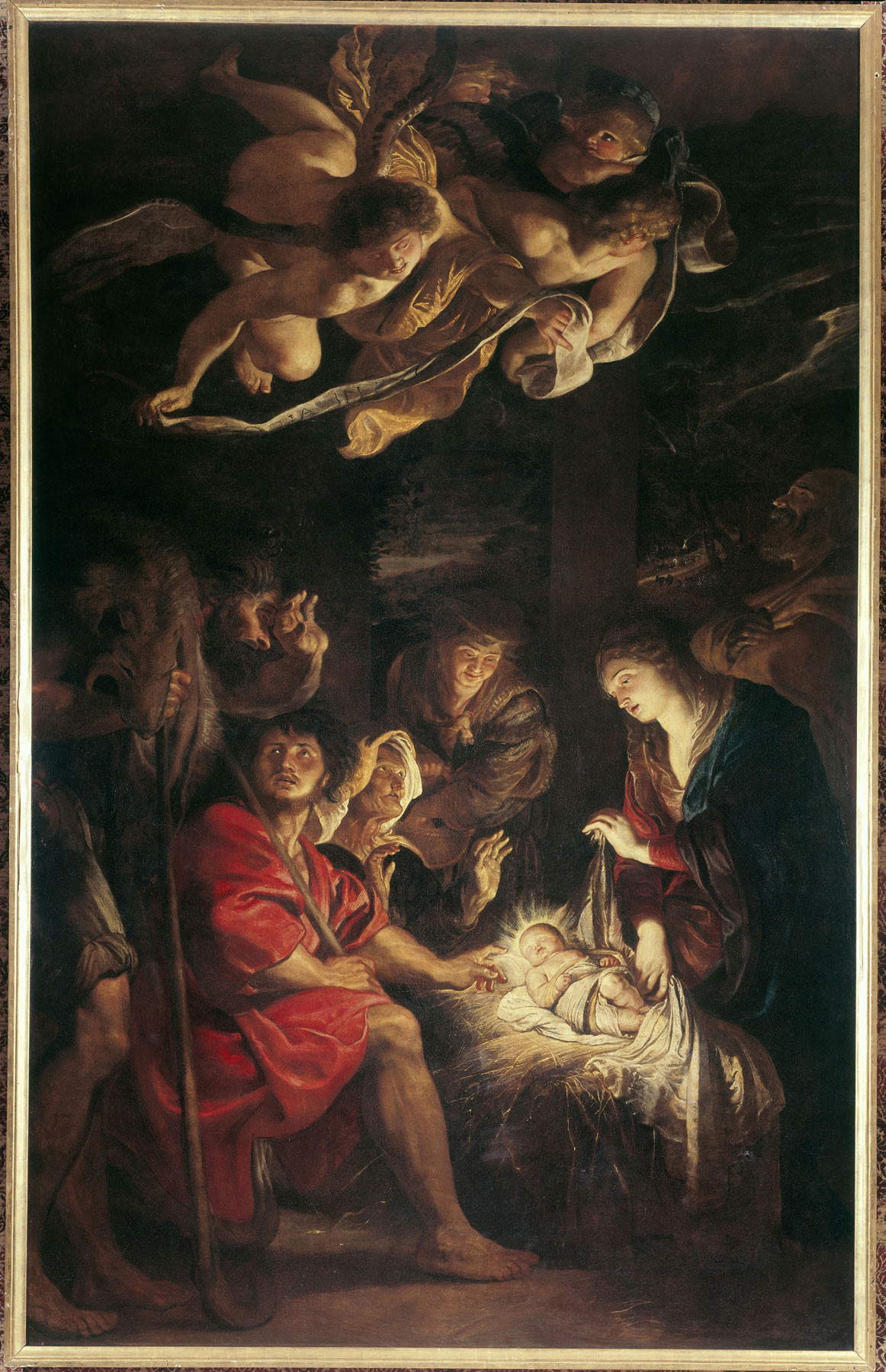

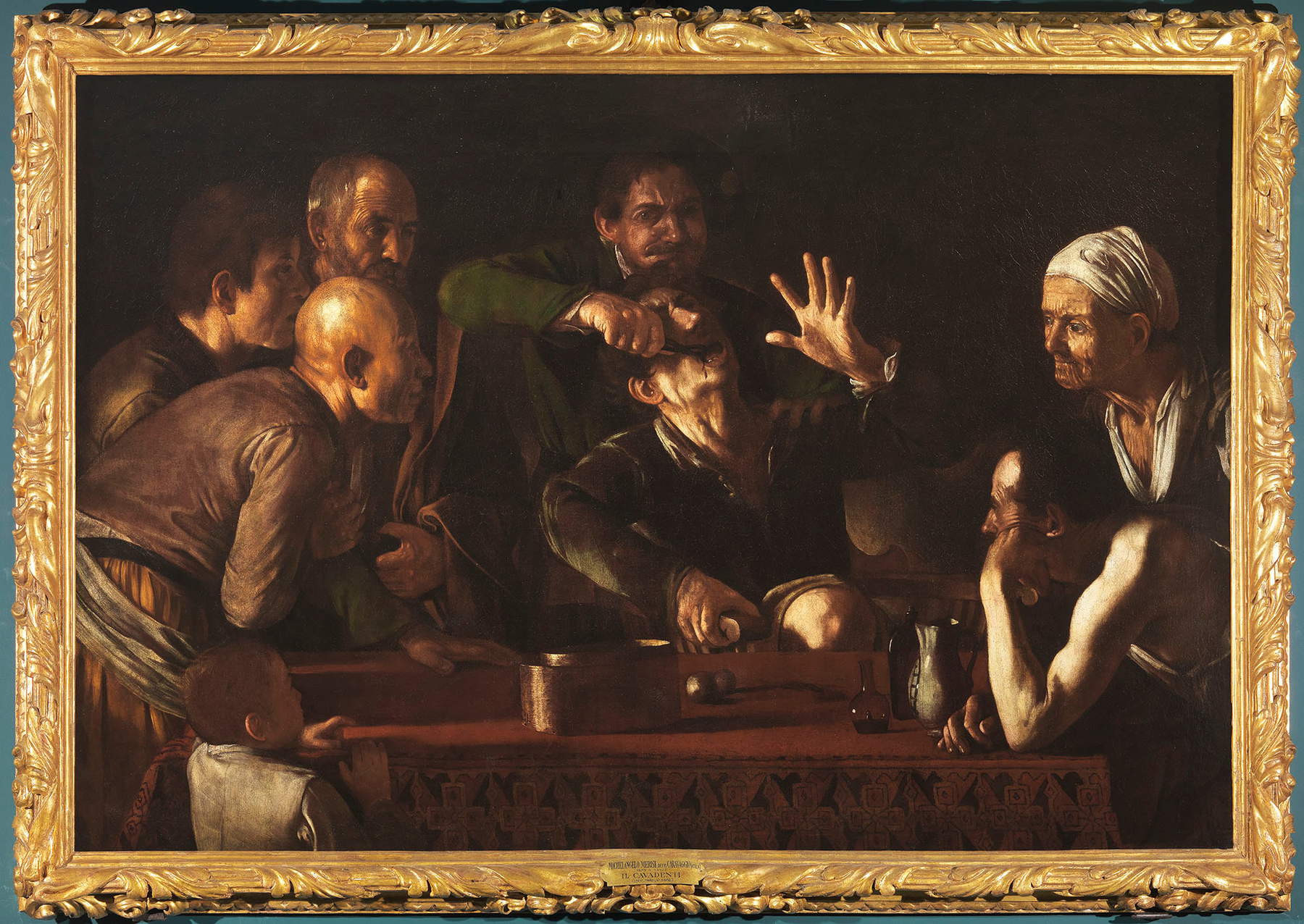


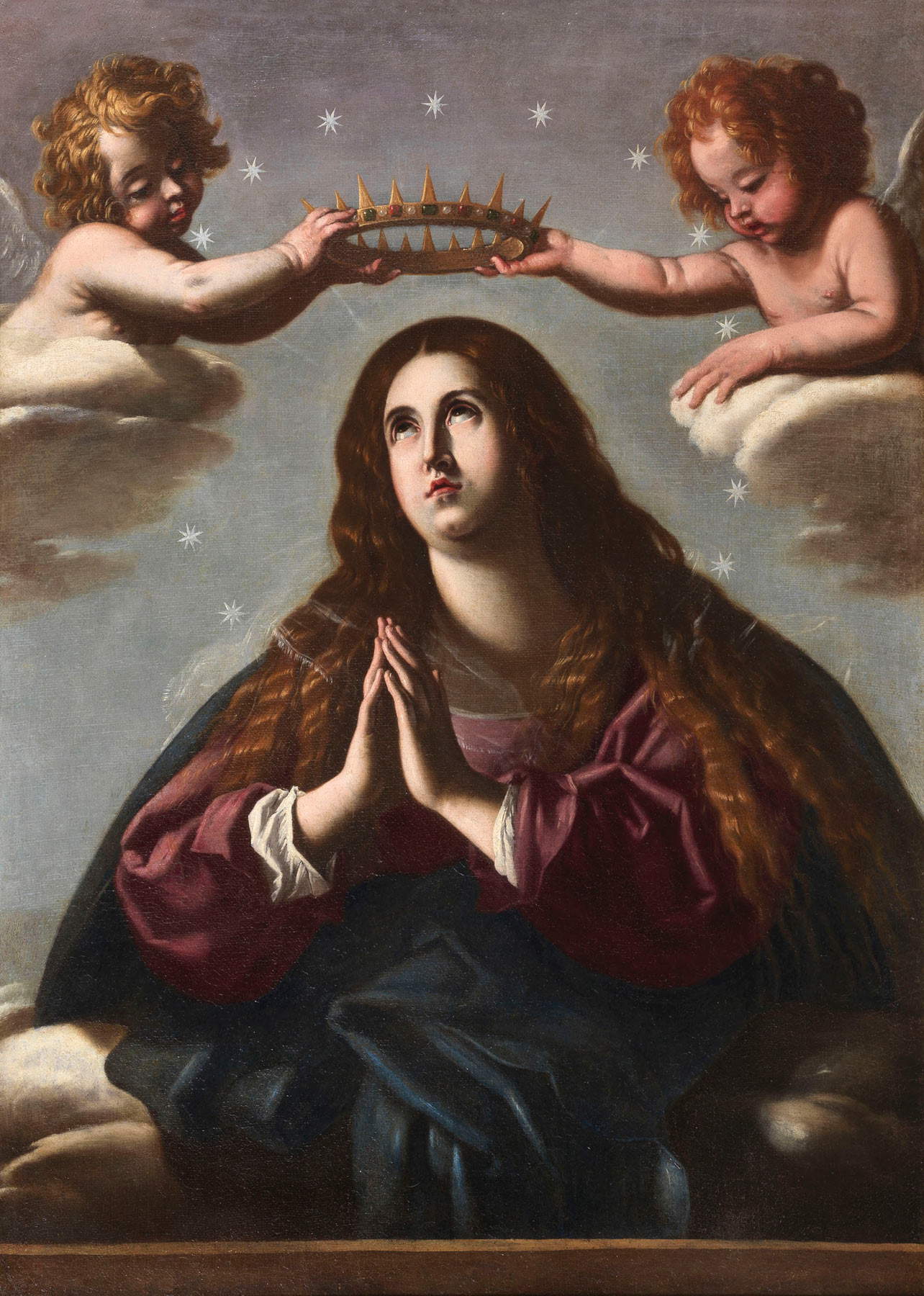
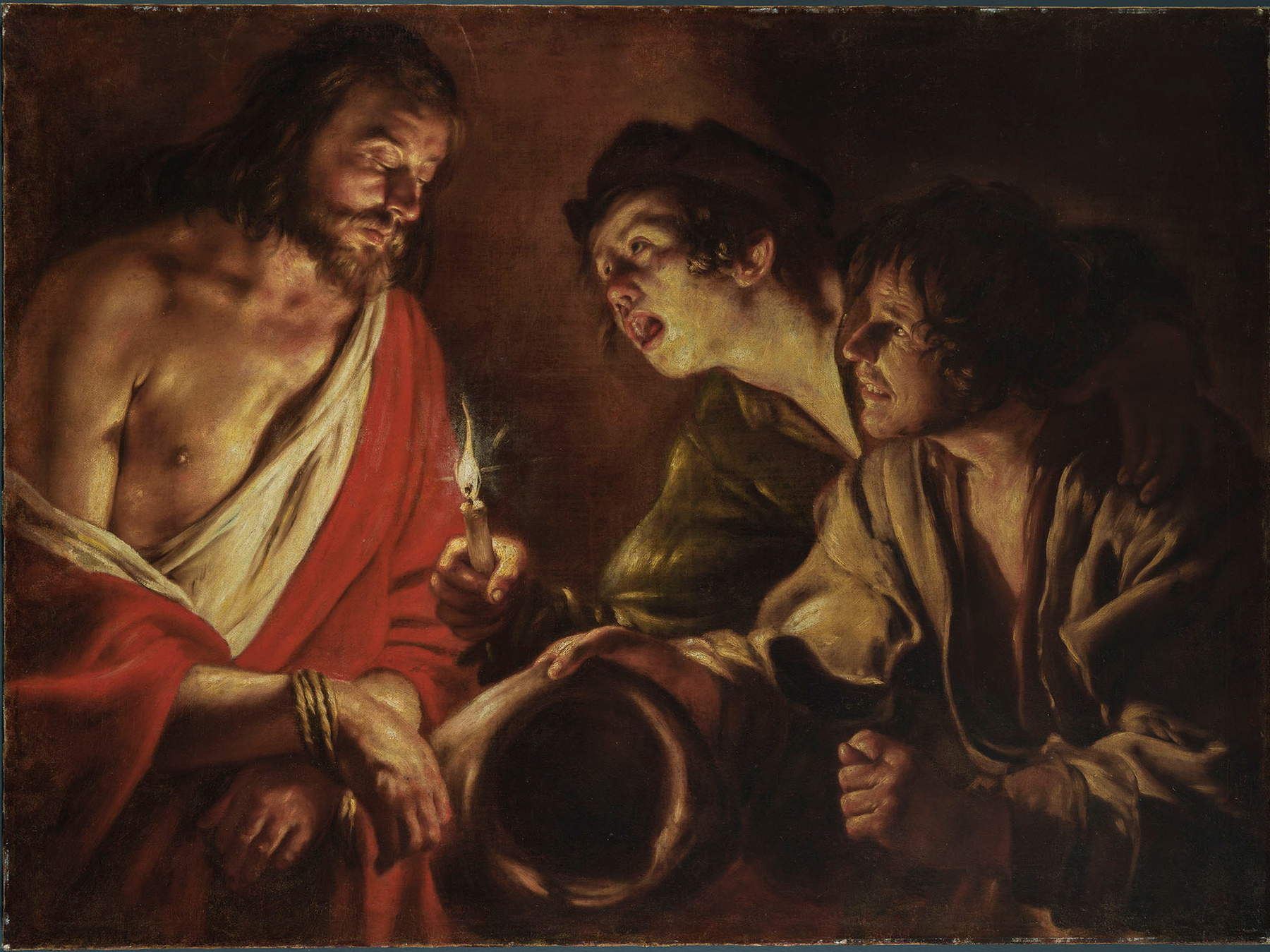









The journey through the rooms devoted to Paolini can begin with the Madonna of the Rosary with St. Dominic and St. Catherine, on loan from the National Museum of Villa Guinigi, along with the two large martyrs that are displayed a short distance away. A youthful work, dated 1626, the Madonna of the Rosary preserves in its compositional scheme a 16th-century taste borrowed from Andrea del Sarto’s Madonnas, but unprecedented for Tuscany at the time are the strong chiaroscuro contrasts that arise from the modulation of light: solutions that, Giusti Maccari points out in the painting’s file, give an account of the naturalistic experiences Paolini gained during his stay in Rome, from which he had made a temporary return that very year. The Necromancer exhibited on the next wall dialogues with the painting of the same subject (albeit a female one) by Caroselli that the visitor saw in the previous room: the relationship with the master becomes explicit in the physiognomic evidence of the character (but the same can be said, moreover, for the Madonna del Rosario), as well as in the common bizarre accent that emerges strongly from the painting of the Cavallini Sgarbi Foundation. Very refined are The Three Ages of Life, which can be admired right next to the Necromancer: a work from a private collection, it restores a further dimension of Pietro Paolini, who also turns out to be an artist capable of composing sophisticated allegories, enhanced by the extraordinary quality of the still-life pieces that are entrusted with the task of conveying the symbolic import of the painting, a complex reflection on the transience of life that begins and ends with the old man seen on the left, one of the most moving figures in Paolini’s painting.
Almost deserving of a show of their own are the two opposite walls, where one has a chance to observe the more excited Paolini, that of the Martyrdom of St. Bartholomew, the Martyrdom of St. Pontian, and theMassacre of the Officers of General Wallenstein. The two martyrdoms are perhaps Paolini’s most famous works, and they are also probably the two most overtly Caravaggesque works of his entire career: the young Lucchese well remembers, especially in the Martyrdom of St. Bartholomew, the precedent of Caravaggio’s Martyrdom of St. Matthew, and is shown here to be moved by the intent to reverberate in his homeland the very high lesson learned in Rome, with two paintings animated by flickers of light that take on narrative functions, by a studied verism (it is enough to observe the tragic figure of Saint Pontian, or that of the henchman shouting boisterously at the address of Saint Bartholomew), by whirling compositions that with their furious chaos increase the participation of the subject. Everything here is aimed at the emotional involvement of the viewer, and the skillful modulations of light augment the drama unfolding here. And without resorting to particularly gory details: the power of Pietro Paolini’s brush and the intelligence of his effects are enough to draw us into his inventions. Singular is theEccidio on the adjoining wall, a hapax that recalls a fact of the time: a political painting, then, commissioned from Paolini in 1634 by the Diodati family to demonstrate their loyalty to the empire (and, by extension, the loyalty of the Republic of Lucca: the stability of the small state was also based on the shrewdness of international relations). Indeed, it was Emperor Ferdinand II who inspired the conspiracy that led to the killing of General Albrecht von Wallenstein, who had become inconvenient, in Bohemia on January 25, 1634: Julius and Fabio Diodati, prominent members of the family, had served Wallenstein and supported the conspiracy. Here Paolini introduces some novelties after his stay in Venice: there is a more spontaneous execution, the brushwork becomes more mellow, the colors are brighter, the light becomes warmer. However, there is no lack of Roman memories: the splendid piece of the column illuminated by a faint light is there to remind us of this.
Continuing on, one encounters other luminous examples of Paolini’s art and moves along the works of his maturity. One pauses in front of the Cantore used for the coordinated image of the exhibition and the Portrait of a Man Writing by the Light of a Lamp, perhaps a self-portrait of the artist, which responds to the candlelight paintings of the Nordic painters that Paolini had observed in Rome. Then, in the same room, here is Concerto a cinque figure, which in the 1980s was exhibited in a nightclub in Rome, the Open Gate Club, and where sudden, wide glimpses of light break the darkness to invest the faces of the figures, in this case all males intent on playing and singing. From Palazzo Mansi comes a masterpiece of tenebrism such as theAllegory of Life and Death, and then we return to the allegorical dipits with a work from the 1950s, the Musical Banquet laden with symbolic meanings, and singular for the details that emerge from the frame. The Sleeping Cupid of the Fondazione Cassa di Risparmio di Lucca brings to mind Caravaggio’s well-known precedent, while the Egg Baggers, meanwhile, offer evidence of a vein in which Paolini was very active, that of genre scenes: the two most interesting examples in this sense, the Pollarolo and the Mondinaro, are not on display, but are located a short distance away, in Palazzo Mansi. Moreover, the Compratrici are also the viaticum to lead the visitor toward the end of the exhibition, since it is a work that Paolini executed together with his pupil Simone del Tintore (to whom we owe the naturamortistic pieces) and thus allows us to broaden our view of the events of Lucca painting after Paolini, with which the exhibition draws to a close.
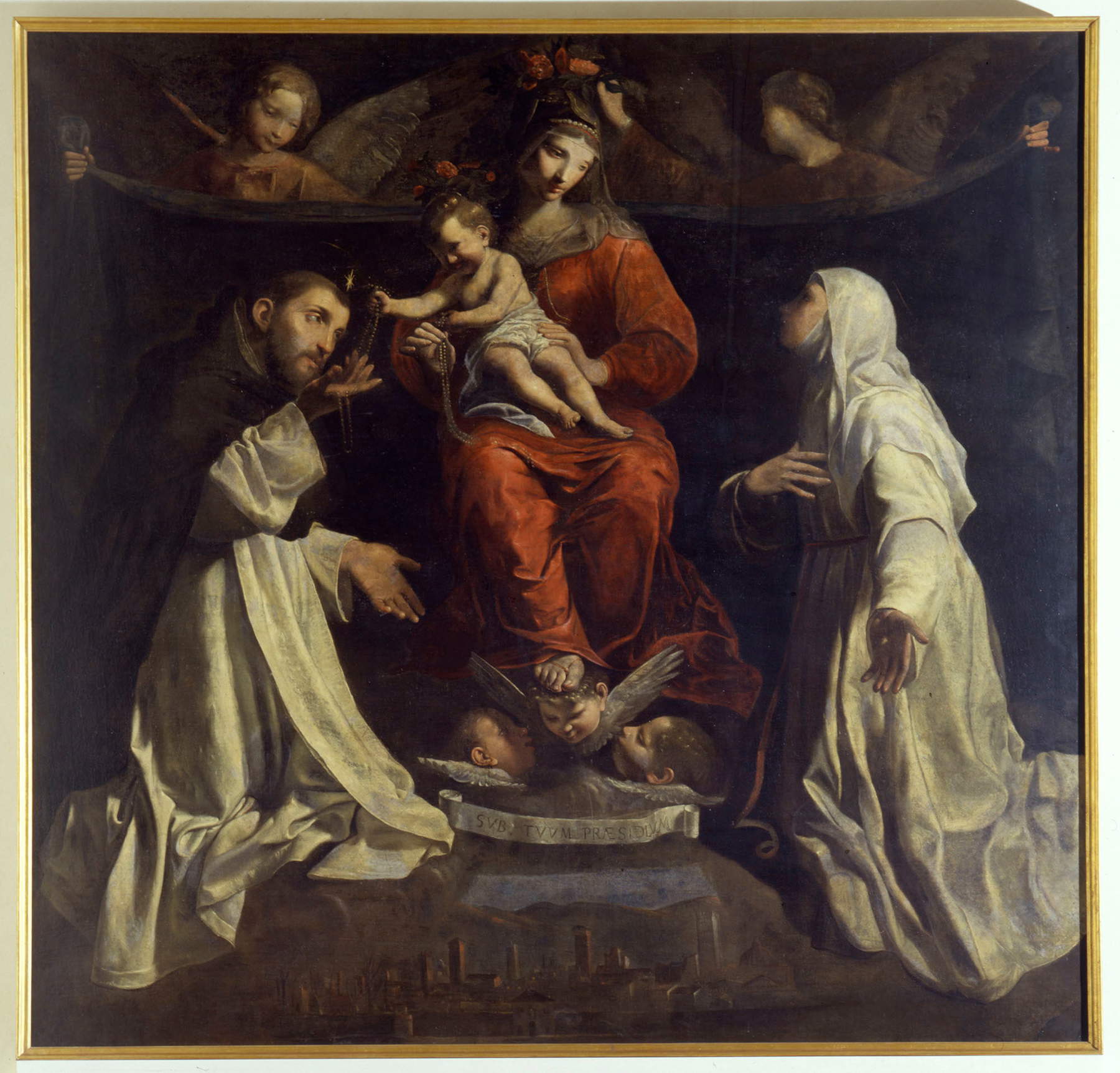




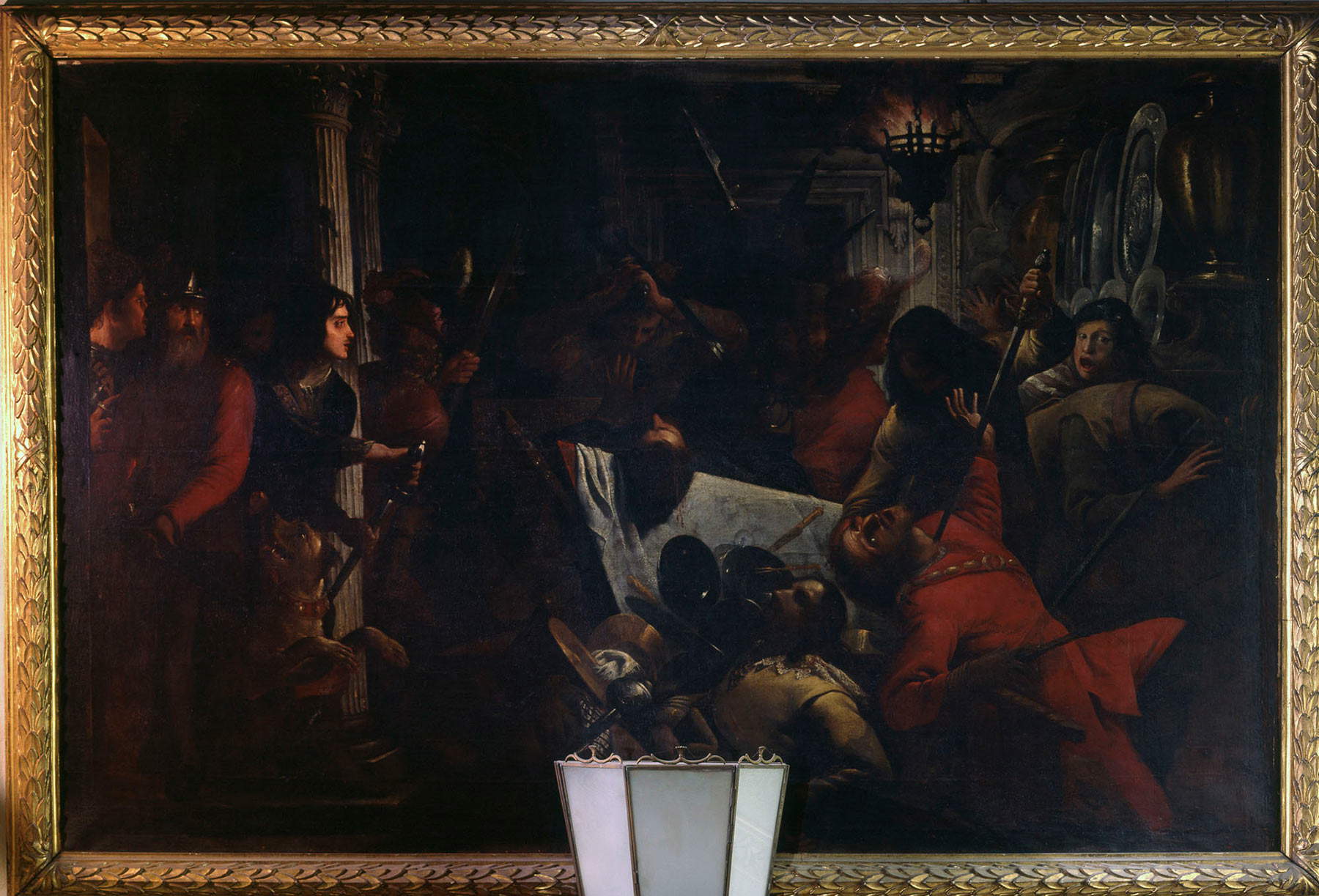





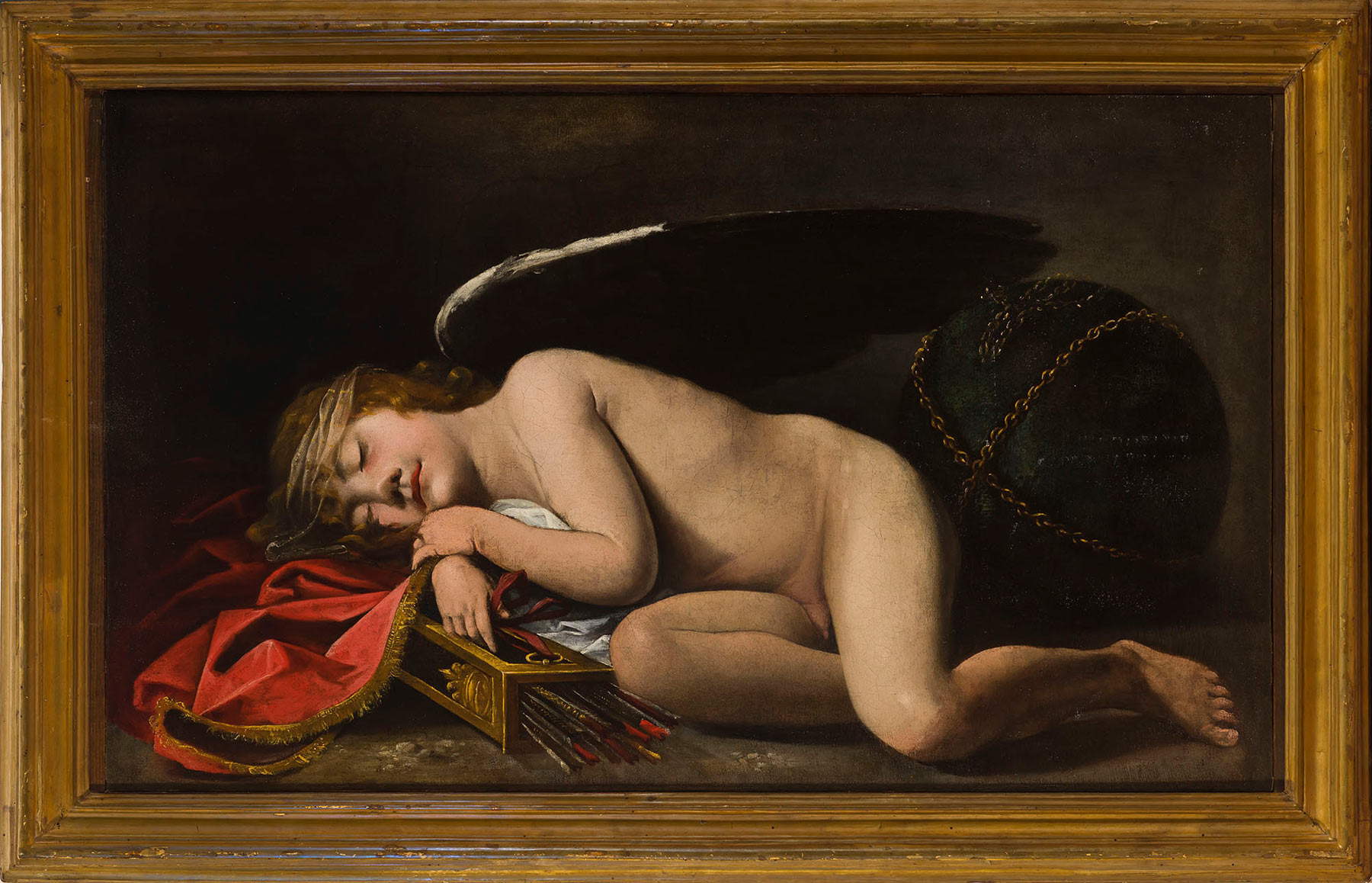

Common to the artists who followed Paolini is the technique well described by Paola Betti in her essay: a technique "that we can define as patchwork, consisting of taking portions of one composition and transferring them equally within others, portions that we then find reproduced in a palpable way in more than one work by the same painter." An example of this modus operandi is Simone del Tintore’s Zampognaro, with its two protagonists, the player and the old woman, who return variously in other known paintings by the artist (though not in the exhibition), one of Paolini’s most faithful followers. More complex is the personality of Pietro Ricchi, an indefatigable traveler always open to new cues: he looks to the luminism of the Northerners (as attested by Judith with the Head of Holofernes from the Buonconsiglio Castle in Trento), sometimes welcomes a popular and devout realism of Lombard inspiration (the Rest during the Flight into Egypt, also from Trento), introduces refined iridescence and becomes more immediate after his encounter with Venetian art(Queen Tomiri with the Head of King Cyrus).
It is then the turn of the meticulous Girolamo Scaglia, another of Paolini’s creations and very close to him: the reduction of violence to the bare minimum in the Judith exhibited in the show, a work in which the artist intends, if anything, to insist on the ferocity of the contrast between the heroine’s ebony beauty and the handmaiden’s old age, gives account of his ability to interpret in an original way the themes of the painting of the time, exactly as happens in the Caducità della vita e del potere terreno, a memento mori “of remarkable expressive and symbolic power, marked by a rapid drafting that reveals a full mastery of the pictorial means” (so Paola Betti). The same force can be admired in the regal and powerful David from a private collection. Finally, the exhibition closes with the true dominus of Lucca painting in the early eighteenth century, Giovanni Domenico Lombardi known as l’Ometto, to whom, Betti again writes, should be “accorded a position of prominence equal to that occupied by Paolini in the previous century both for the level of quality achieved and for the richness of his production, which touched on all thematic genres.” Lombardi, too, like Ricchi, is an artist with a varied and composite culture: thus we pass from the classicism of the Martyrdom of Saints John and Paul to the very crowded Death of Virginia where the long wave of Caravaggio’s echo is attenuated by the pastiness of Venetian painting, we pass through genre scenes of still seventeenth-century taste such as the Scene of Seduction and Deception until we arrive at a surprising, neo-Correggesque Adoration of the Shepherds.
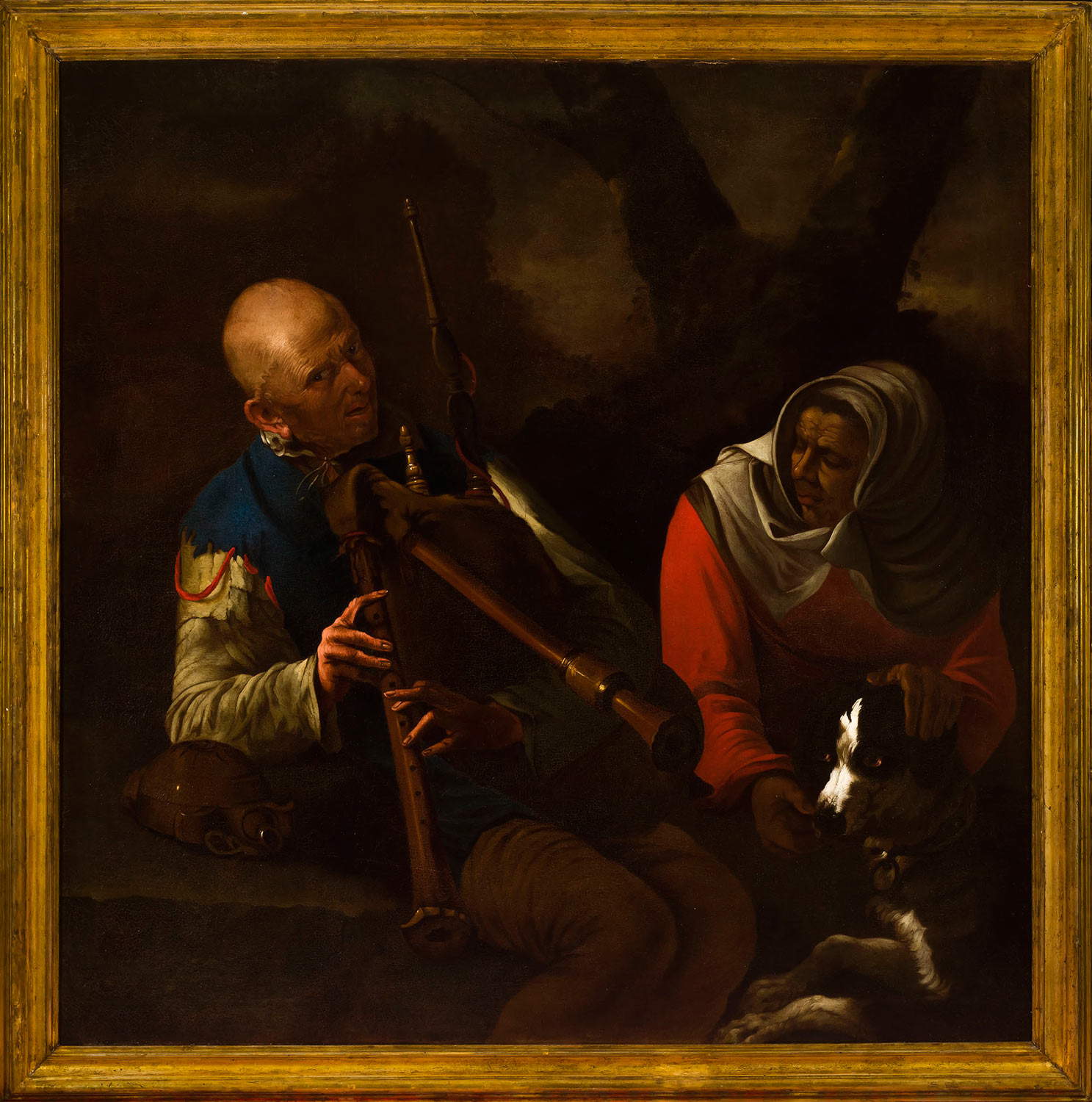









There is no doubt that Pietro Paolini was among the most original and versatile interpreters of the Caravaggesque verbo, and that he is an artist who can well rise to the rank of the most important Tuscan masters of the seventeenth century: scholars know this well (and the exhibition curated by Vittorio Sgarbi has, moreover, assembled a team of the highest level, including those who signed the texts of the catalog, namely the aforementioned Betti, de Vernejoul, Carofano, Giusti Maccari and Rossetti joined by Alberto Ambrosini and Roberto Rapuano, and those who compiled the works’ files: all the experts on the subject are present), and with I pittori della luce now also the general public can at least have an idea, having visited one of the most significant exhibitions on the seventeenth century seen in Italy in recent years. Visitors should prepare themselves for a visit to an exhibition based on a high-level scientific project and presented with arrangements that are anything but conventional: light that can well be said to be Caravaggesque and that also encourages a contemplative approach, completely absent room panels (typical of exhibitions curated by Vittorio Sgarbi: for those who arrive with the intention of learning more, the audio guide will be an inescapable accessory), the large sculptures by Cesare Inzerillo and Marilena Manzella (Sgarbi’s fans have already seen them in the various “museums of madness”) that magnify beyond measure certain recurring details in the paintings of the time (a candle, a pear, a shroud, a violet) and that in turn recur looming between one room and another. There is also, a rare occurrence for ancient art exhibitions, background sound, with original music composed by Lello Analfino.
And there are, of course, the works: about a hundred, with a carefully calibrated selection. Missing, yes, are some important works by Paolini conserved in international collections, starting with theAllegory of the Five Senses from the Walters Art Museum in Baltimore and the most recent acquisition in the Paolini catalog, the Penelope attributed to the artist by Marco Ciampolini when it went to auction in 2016, and then published by Massimo Francucci last year, after it was exhibited at the Ulysses exhibition in Forli. But these are absences that do not undermine the solid scaffolding of the exhibition. I pittori della luce is an accurate exhibition that fills a gap and writes a relevant page in the studies on seventeenth-century painting in Tuscany, composing a path that deepens the figure of Pietro Paolini and evaluates its consequences on the arts in Lucca. The selection seizes mostly from particular collections, but does not leave out several fundamental works from museums in the territory and beyond, without, however, impoverishing it. Those who want to, therefore, go to Villa Guinigi to marvel at the enormous Convito di san Gregorio Papa, delve into the Paolini genre painter at Palazzo Mansi, stretch to the church of Gattaiola to discover an altarpiece by the artist in his habitat, enter San Michele in Foro to see the masterpiece that is the Martyrdom of St. Andrew, wander into the temple of seventeenth-century Lucca, the Oratory of the Guardian Angels, a recently restored jewel where paintings by many of the artists who worked in the city in the second half of the century can be admired. The exhibition itself is the best invitation.
Warning: the translation into English of the original Italian article was created using automatic tools. We undertake to review all articles, but we do not guarantee the total absence of inaccuracies in the translation due to the program. You can find the original by clicking on the ITA button. If you find any mistake,please contact us.